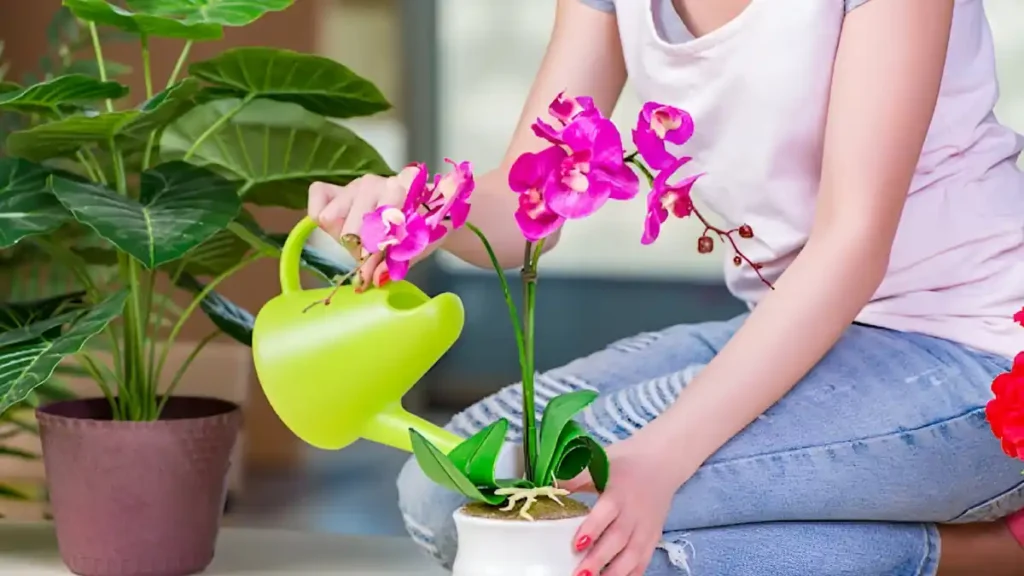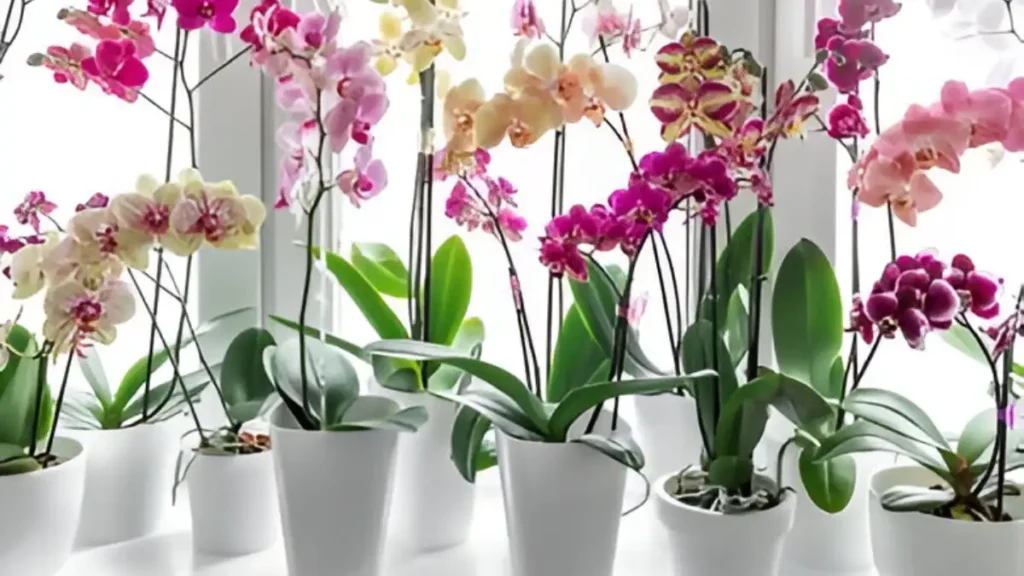Orchids are popular for indoor gardeners because of their beautiful beauty and sensitive charm. Orchids, despite their reputation for being picky, can flourish indoors with the right maintenance and care, rewarding growers with beautiful blooms and colorful foliage all year long. Whether you’re an experienced gardener or a beginner, learning how to grow orchids indoors can be a rewarding experience.
How to grow orchids inside: some key tips:
1. Select the correct orchid:
There are thousands of orchid types, each with unique maintenance needs. Make sure the orchid species you wish to grow is appropriate for indoor cultivation and that it fits your skill level before you begin by doing some research on it.
2. Give enough light:
For them to flourish, orchids need strong, indirect light. Put them close to a window that faces south or east so they may get lots of natural light without being in the direct sun. If there isn’t much natural light available, think about using artificial grow lights in addition.
3. How to grow orchids with appropriate temperature and humidity:
The ideal temperature range for orchids is 60–80°F (15–27°C) during the day and a little colder at night. Furthermore, they do well in humidity ranges of 50–70%. Using a humidifier, arranging orchids in groups, or setting pebble-filled water trays underneath the plants are some ways to raise the humidity in the space.
4. Select the proper potting mix:
A potting mix that drains properly and gives roots adequate air circulation is necessary for orchids. Make use of a particular orchid mix made up of charcoal, sphagnum moss, bark, and perlite. Conventional potting soil should not be used since it holds excessive moisture and can cause root rot.

5. Use water efficiently:
One of the most frequent errors made when caring for orchids is overwatering. Before adding any water, let the top inch of the potting mix dry off. After completely submerging the roots with water, let the extra runoff. Orchids should never be left in standing water as this might lead to root rot.
6. How to grow orchids, apply fertilizer often:
There are particular nutritional needs for orchids. During the growing season, apply a half-strength diluted balanced orchid fertilizer every 2-4 weeks. During the dormant season, fertilization frequency should be decreased.
7. Repot when needed:
Orchids may outgrow their pots as they become larger or the potting mix may degrade. Repotting is necessary when fresh growth appears or the potting mix begins to break down. Repotting should be done gently to protect the fragile roots.
8. How to grow orchids by monitoring for pests and diseases:
Keep a lookout for typical orchid pests including aphids, mealybugs, scale insects, and spider mites. Use a horticultural oil or insecticidal soap to treat infestations as soon as possible. Furthermore, keep an eye out for symptoms of illnesses like fungal infections or root rot and take the necessary action to treat them.
Conclusion:
Learning how to grow orchids indoors can be a fulfilling and entertaining experience with the correct strategy. Orchid aficionados can establish ideal conditions for their plants to flourish by knowing the special requirements of orchids, which include light, humidity, temperature, watering, and air movement.
Certainly! If you’d like to learn more, please consider following our WhatsApp Channel, Facebook, Instagram, YouTube, Twitter, and Pinterest.
A frequently asked questions:
Q1: How to grow orchids in water?
A1: While certain orchid species can be grown in water by placing their cuttings in a vase filled with distilled water until roots emerge, most orchid species cannot grow exclusively in water due to the need for air surrounding their roots.
Q2: How to grow orchids from cuttings?
A2: Choose a healthy stem with three or more nodes if you are growing orchids from cuttings. After that, plant the cut end in a well-draining media, such as sphagnum moss or orchid bark, and immerse it in the rooting hormone. Until roots form, keep the cutting in a warm, damp place with indirect light.
Q3: How long do orchids live?
A3: Orchids can live for a very long time with the right care; some kinds can even outlast their owners. An orchid’s life duration varies based on its species, growth environment, and general level of care.



